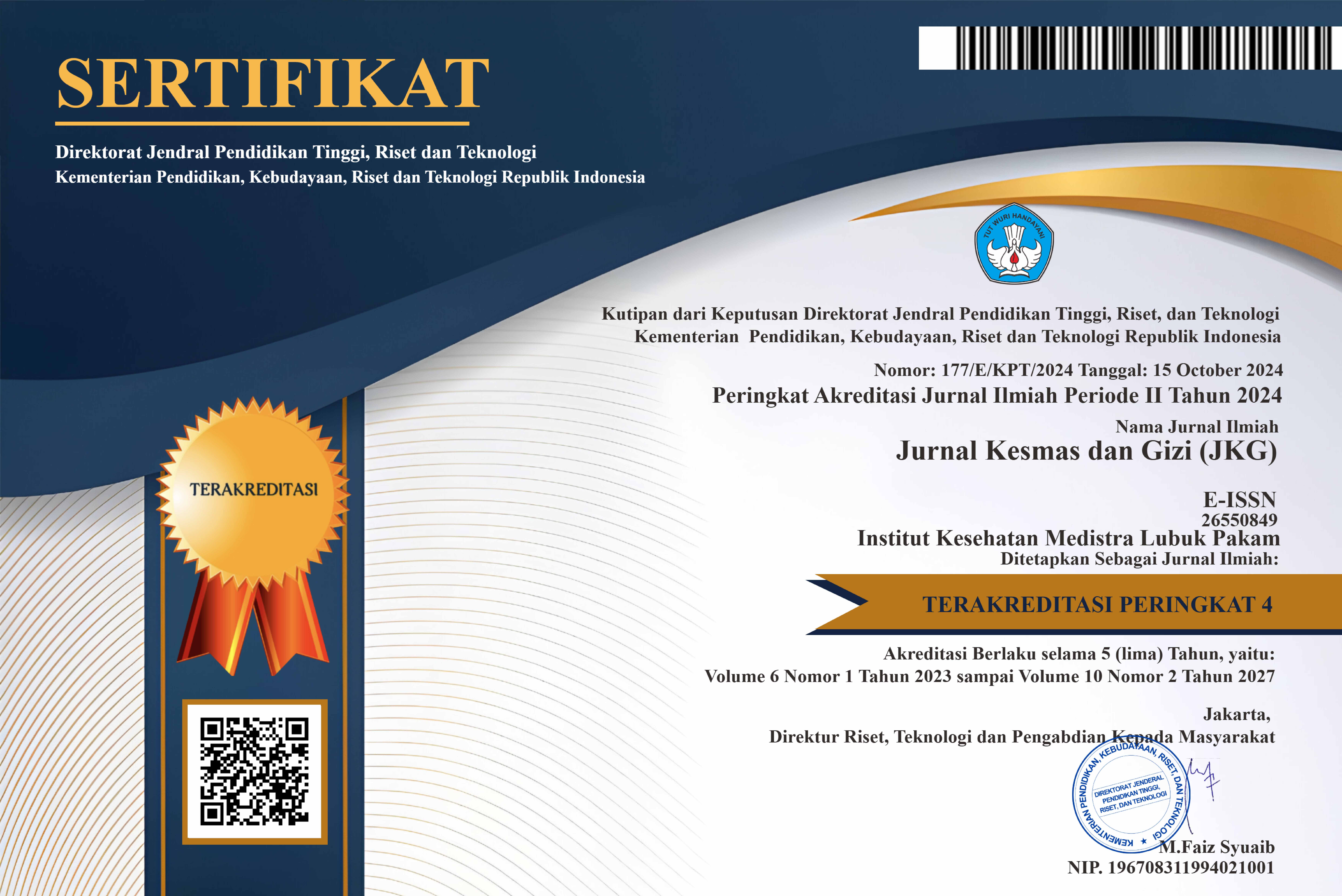EVALUASI PELAKSANAAN PROGRAM EXPANDING MATERNAL AND NEONATAL SURVIVAL (EMAS) UNTUK MENURUNKAN ANGKA KEMATIAN IBU DAN ANAK
DOI:
https://doi.org/10.35451/jkg.v1i1.65Keywords:
Evaluation, EMAS Program, Maternal Mortality RateAbstract
Increasing the degree of maternal and child health continues to be carried out in Indonesia which is the achievement of the MDGs program. One program included in this program is Improving Maternal and Child Health. Based on the 2012 Indonesian Demographic and Health Survey (IDHS), the maternal mortality rate was 359 per 100,000 live births. This figure is still far from the target set in the MDGs, which is 102 per 100,000 live births in 2015. To achieve this target, the Maternal and Neonatal Survival (EMAS) program was created which focused on reducing maternal and child mortality. This study was conducted qualitatively with a case study design to evaluate the implementation of the EMAS program. Research locations in Batang Kuis Health Center and Sembiring Delitua Hospital. The informants of this study were the heads of the puskesmas, coordinating midwives, hospital management and the community. In-depth interviews were carried out using guidelines, by analyzing the results transcripts and describing them in the form of a matrix.
From the results of the study it was found that the EMAS program in the first year had not reached the target because the application of the Information and Communication System of the Emergency Referral Network, the Public Health Gate Information System and the Strengthening and Learning Information System had not been implemented only in the system development stage. This is due to the lack of human resources in terms of technology and limited internet networks due to the different geographical conditions of each puskesmas. Suggestions to the health office and Puskesmas provide facilities and infrastructure in the implementation of the information system because this system focuses on addressing maternal and child emergencies by using the internet and SMS gateway as well as improving the ability of health workers to apply
Downloads
References
Aditama. 2013. Perwakilan Kemenkes Laporkan Seputar Kesehatan Ibu dan Anak Pada Pertemua WHA ke 66 di Jenewa Swiss. Diunduh 21 Januari 2014, dari Kementerian Kesehatan RI: http://www.depkes.go.id.
Dinas Kesehatan Kabupaten Deli Serdang. 2011. Profil Kesehatan Kabupaten Deli Serdang Tahun 2012. Kabupaten Deli Serdang.
Dinas Kesehatan Kabupaten Deli Serdang. 2012. Profil Kesehatan Kabupaten Deli Serdang Tahun 2013. Kabupaten Deli Serdang.
Kemenkes RI. 12 Januari, 2012. Pelayanan Antenatal Terpadu. Diunduh 05 Februari 2013, dari Ditjen Bina Gizi dan Kesehatan Ibu dan Anak: http://www.depkes.go.id
Hardjono, Hartanto. 2013. Progrees EMAS di Jawa Tengah Tahun 2013, dari kebijakan kesehatan Indonesia:http://www.kebijakankesehatanindonesia.net
Murti, Bhisma. 2013. Kajian Tentang Angka Kematian Ibu dan Angka Kematian Bayi di Indonesia (SDKI 2012) dibandingkan dengan SDKI periode sebelumnya, dari Kebijakan Kesehatan Indonesia, diakses 17 Februari 2014; http://kebijakankesehatanindonesia.net
SDKI. 2007. Survei Demografi dan Kesehatan Indonesia. Badan pusat Statistik.
SDKI. 2012. Survei Demografi dan Kesehatan Indonesia. Badan Pusat Statistik.
WHO.2007. Maternal Mortality in 2005: Estimates Developed by WHO, UNICEF, UNDFPA and the World Bank:WHO
Unicef Indonesia. 14 Juni, 2012. Resiko Kematian Ibu dan Anak Indonesia masih Tinggi walaupun Angka Kematian sudah menurun. Diunduh 18 Juni 2013, dari Pusat Media: http://www.unicef.org.id
Downloads
Published
Issue
Section
License
Copyright in each article is the property of the Author.


























